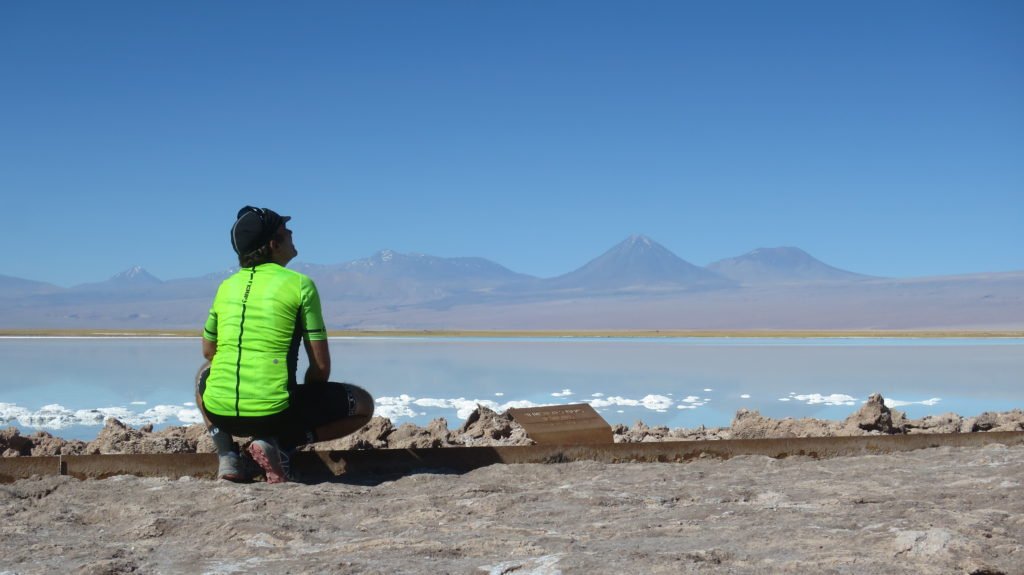
Chile. The smell of freshly baked empanadas, washed down with Sauvignon Blanc. The taste of red dust, rinsed down with a cold Cerveza Austral. Listening to Calexico’s ‘Carried to Dust’ in endless rotation, the perfect soundtrack for an adventure in a country that is not short of surprises.
The Atacama Desert and Pumalin National Park in Patagonia – two landscapes that couldn’t be more different. Worlds apart, yet both embedded in one very thin country. It is the dust that connects them in my memories. Dust is what I remember when I think back to the end of last year, buying a cheap 24-speed Trek Marlin 6 mountain bike in Santiago and exploring a previously unknown part of the world for a number of weeks.
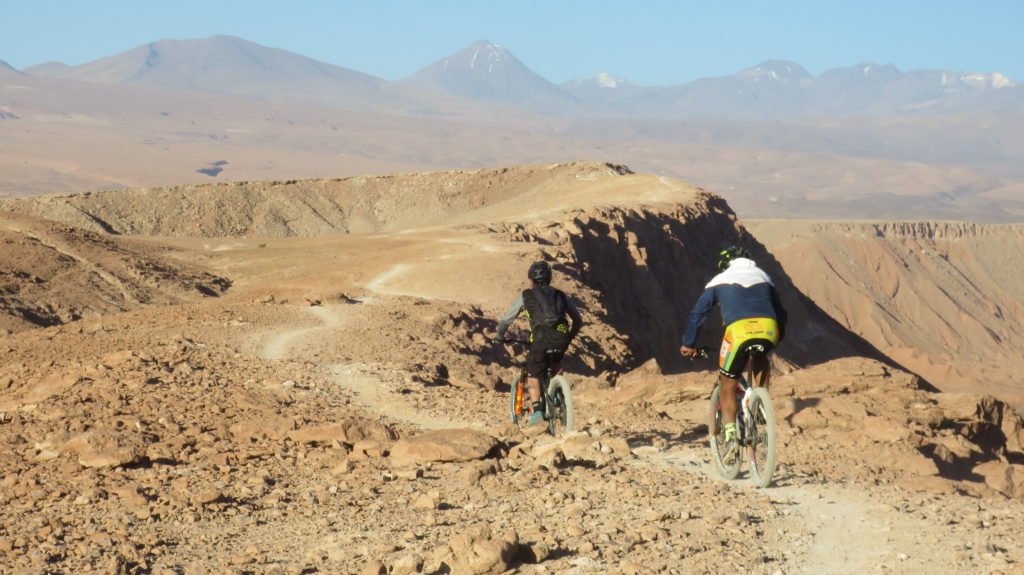
My journey takes me north of Santiago first, on a plane to Calama and then a short shuttle ride though the desert to San Pedro de Atacama. While Calama hosts the biggest copper mine in the world, San Pedro is the undisputed tourist hub of the Chilean Atacama Desert, the driest place on earth. With cold nights, crystal clear skies and stunning sunrises and sunsets it is hard to beat. Mixed with loads of places to eat and cheap hire bikes available on every corner, this is a dream for every off-road enthusiast, either for a few days or, as in my case, for a number of weeks.
Before I arrived in Chile I hadn’t thought about taking my bike here, but for mountain biking I can only think of a handful places I have travelled to so far that can rival the small and cosy oasis in the middle of a fascinating lunar landscape. Imagine massive sand dunes, killer climbs, technical downhill trails and endless ridge rides. Almost everything here makes me stop with awe. And come back a second time. Sometimes a third and forth time.
Nearly every morning I get up early, wrap myself in my down jacket and follow my nose into another part of the desert. I am normally back for breakfast, as riding during the day is a serious challenge with temperatures in the upper twenties. Only in the late afternoon the conditions become bearable again. The best activity in between is to relax and read a book in a hammock in one of the many hostels in town, or to sit in the shade and sample the coffee, croissants and sandwiches at La Franchuteria, a French bakery in which I soon become a regular customer.
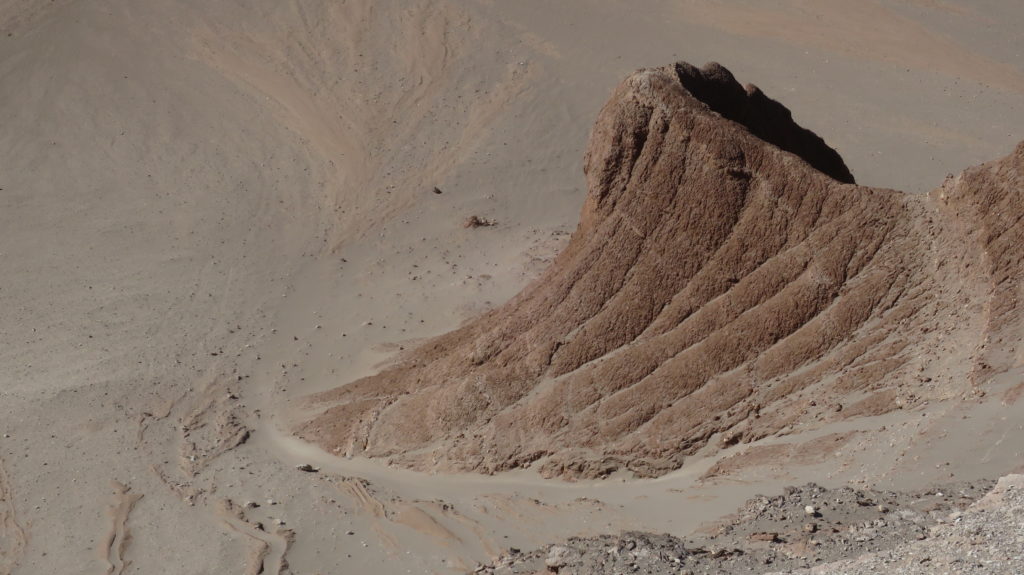
On most evenings I head out again, the experience of watching the sun setting over this surreal landscape is second to none. When the sun finally sinks it paints the rock formations into an array of warm colours while the sky changes from pink to purple and on to black. Stone and sand formations stick out like bizarre sculptures that appear from the massive valleys. Carved by wind and water, the landscape displays an impressive range of colour and texture, while the wind blows clouds of dust through this barren paradise.
Yet there’s more to San Pedro than the bizarre landscapes of the Valle de la Luna, Valle de Marte or the Qubrada del Diablo. All of them make for amazing mountain biking, but the salt lakes in the south of the small town give you a unique chance to get some serious gravel miles in those legs, go swimming and spot flamingos along the way. The best time to visit the lakes is in the morning, as most visitors flock to them in the afternoon.
Laguna Cejar invites me for a swim in the salty water. The water is so salty that I float on the surface without any problems. A few kilometres further south Laguna Tebinquinche is surprisingly tranquil, far off the tourist track, with only a handful of people around. As their Landrover leaves, I am by myself.
But the most amazing experience of all is strapping gear and food on the bike, taking enough water with me and spending a night under the stars in the open desert.
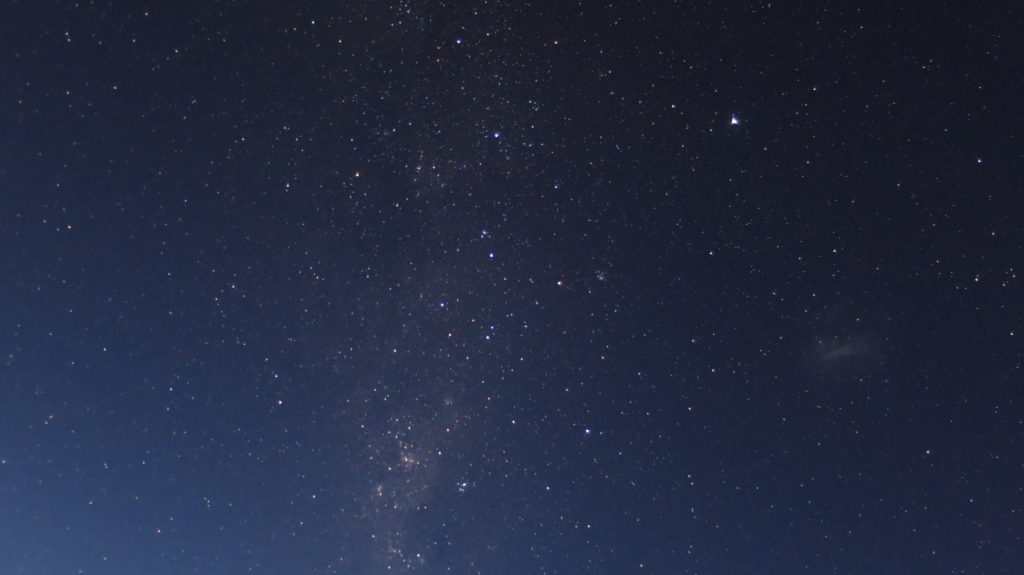
After a few weeks I leave the Atacama again and set my feet on a much wetter place on the Northern edge of Patagonia: Isla Grande de Chiloe. After a few night’s rest and 24 hours of non-stop rain in the capital Castro I set off. With my Apidura bags strapped on the frame and a massive roll of cookies to feed me I am on my way towards Quellon on the southern edge of the island.
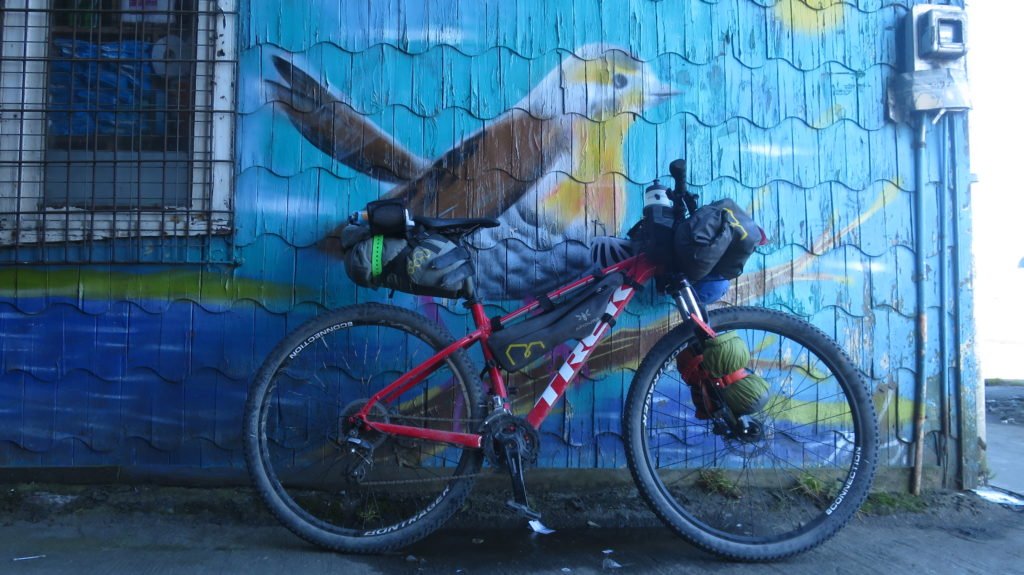
Ruta 5 Sur, better known as the Pan-American Highway, terminates here. But my journey is just about to begin. A ferry takes me east across the Pacific Ocean. And as the sun sets the snow-capped top of Volcan Michinmahuida disappears slowly in the pink sky. Two hours later I set my feet (and wheels) onto the Chilean mainland again in Chaiten.
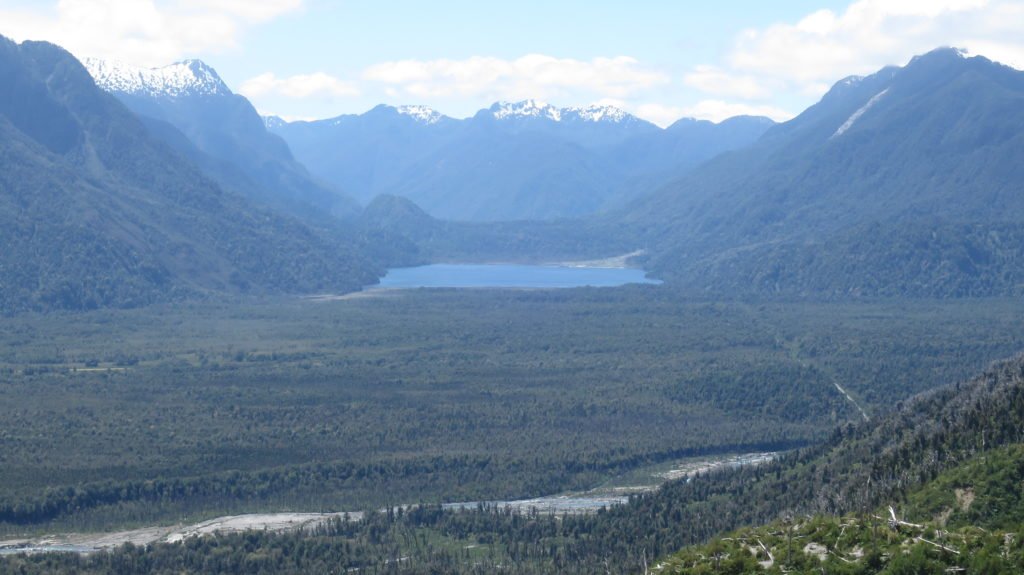
From here my adventure takes me northbound through Pumalin Park, a fascinating nature reserve with fjords, temperate rain forest and impressive volcanoes. The total opposite of the Atacama, but equally impressive. The park, opened by North Face founder and philanthropist Douglas Tompkins, hosts some of the most active volcanoes in the country, among them Chaiten.
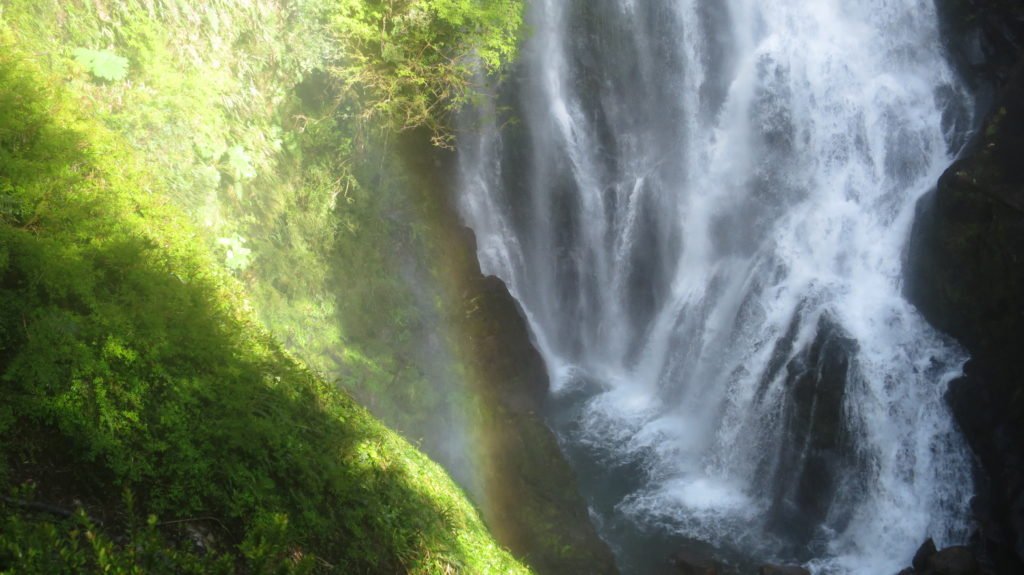
I hide my bike in a bush and hike up to the crater, and I can only imagine the carnage when it last erupted in 2008. The landscape on the upper half of the trail is dominated by dead and fallen trees. From the top I can see the caldera floor with two wonderfully blue lakes on the north side of the lava dome. As the desert a few weeks earlier, this is a dream-like landscape.
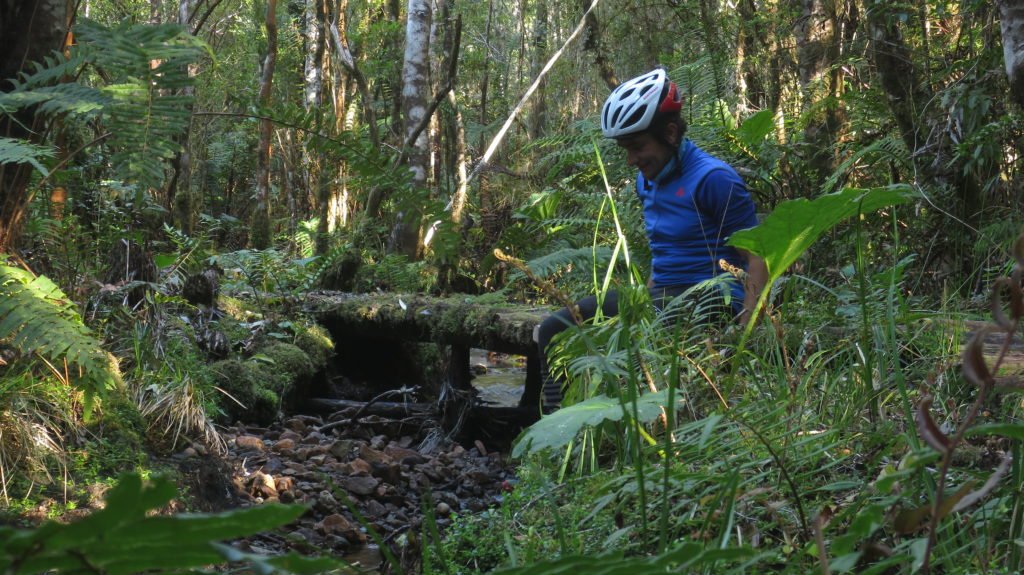
Not long days in the saddle, but a curious mixture of hiking, admiring and cycling dominate my ride on the northern Carretera Austral, Ruta 7. The road runs for 1,240 km from Puerto Montt to Villa O’Higgins through rural Patagonia. Construction of the highway commenced in 1976 under the dictatorship of Pinochet, and it is often referred to as one of the best bikepacking journeys in the world. The areas it traverses are sparsely populated. Despite its length the highway only provides access to about 100,000 people, a paradise for cycling.
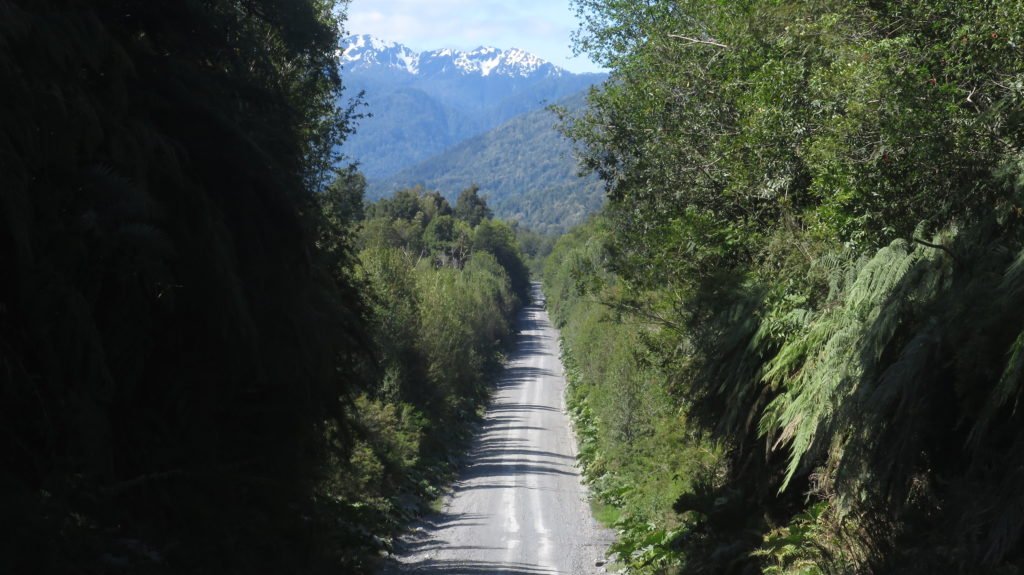
The facilities for camping on Lago Negro, my stop for the first night in the park, are as stunning as the scenery I pass through. One of the campsites even has cold showers. The end of November is still low season, so I have most places for myself. In the early hours of day two I hike up to two impressive waterfalls, Cascada Baja and Cascada Alta. In the middle of the temperate rainforest the amazing beauty of the landscape unfolds in front of me, when the first rays of sun break through the dense forest. From here it is a short but demanding ride on rough gravel to Caleta Gonzalo, from where a seven-hour ferry and bus journey through an impressive fjord takes me to Hornopiren. Here the gravel shortly turns into tarmac again.
This is where the dust settles. After four days on the road I finish my adventure the next day in Puerto Montt, and I can only imagine what the southern part of the route looks like. I will hopefully be back soon and find out. A country of stark contrasts and a paradise for cycling: There are very few countries in the world that have impressed me as much as Chile did.
Markus Stitz
Markus will talk about this and other adventures in South America on Thursday 2 May in the Green Jersey in Clitheroe, on Saturday 11 May at Oban Distillery (as part of the Oban Sportive) and on Thursday 8 June 2019 at Eastgate Arts in Peebles. More information and tickets are available on www.markusstitz.com/talks.
Yellow Jersey’s bicycle insurance will insure your bicycle for bike packing adventures worldwide, while cycle travel insurance will ensure that you have the appropriate cover should have an accident and require medical help while cycling overseas.